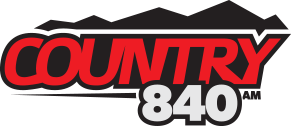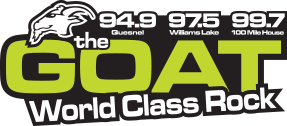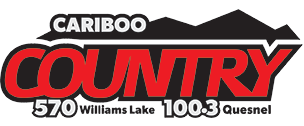In less than three weeks, staff and students will be returning to the classroom.
This time when students head back to school, the excitement of seeing friends after a long summer might, for some, be replaced with anxiety due to the COVID-19 pandemic.
Starting September 8 and 9, all staff will meet with their school’s joint health and safety committee to receive instruction on how the updated BCCDC guidelines will work in their school.
On September 10, students will return to schools for orientation. Students can get familiar with classrooms that will look different than they did before the pandemic. During orientation, students will get assigned to their class or classes, find out who is in their learning group, practice their new routines, familiarize themselves with how to safely move from the class to outdoor and common areas of the school.
Chris van der Mark, the superintendent of schools for the Cariboo-Chilcotin School District, said that they understand the anxiety. Still, he feels the district is ready to handle the ongoing return to classes.
“We know it’s an anxious time for folks,” he stated. “I think the real positive is that we have a bunch of people from all aspects of the organizations working together to make sure it can work.”
Students will be put in learning groups to limit the amount of physical contact. A learning group is a group of students and staff who remain together throughout the school quarter, semester or year and who primarily interact with each other.
Learning groups provide a range of benefits for students, including more in-class learning time, increased peer interaction and support, and decreased feelings of isolation.
van der Mark said that there would be two different plans in place, one for elementary students and the other for high school students.
“The elementary planning piece looks significantly different and is a lot easier to manage,” he said. “Under stage two, we’re looking at 100 percent of our students returning, 100 percent of the time. The planning piece is really around the cohorts.”
A cohort, which is a group of people banded together or treated as a group, for elementary schools will be 60, compared to 120 for high schools.
“The cohorts are set up because they have to have the ability to track even beyond schools,” van der Mark explained. “Kids are going to do other things when they are outside of school. We hope that families will be responsible, but our reality in the Interior, especially in the Cariboo are different than what schools might be doing when they leave schools in Vancouver.”
van der Mark said being a rural district in the Cariboo, actually works in favour for the district as they haven’t had a lot of exposure or issues with COVID in our area.
“Nine of our elementary schools are very small and well under 60 kids to start with, and a number of those students our almost there own cohort because they tend to be remote smaller areas. All of the obligatory hygiene, handwashing cleaning, distancing measures are really straightforward, so we are fortunate that we have some of those opportunities.”
“Then we have some elementary schools that again aren’t really big but are in the 200 student range, and again its fairly easier to organize and manage into those cohorts to minimize cross contacts. Our bigger schools take a bit more organizational work. We have some elementary schools that are over 300, and they will have a bit more organization, but again they are fairly manageable under the regulations that are put forth.”
van der Mark added that though the area has had success with the COVID-19 pandemic that people have to continue to make sure they are practicing their hygiene, hand washing, and all of those things to ensure that the area continues to have that kind of success.
As for high school students, van der Mark said that this is where there will be the most significant change.
“The high schools are certainly trickery,” he stated. “We are really quite confident on the overall ability to have a safe environment; the trick is making sure that we keep the immediate cohort contact.”
van der Mark said that the students would see the number of classes they are taking at a one-time change.
“Traditionally students would probably have four classes during a semester over 20 weeks, and so if you and I were in a class in the morning in one block, and then you and I would go to different classes, with different people in the next block, and so on and so forth,” he explained. “That very quickly gets out of that manageable 120 range, so what you are reading about in the province, in general, is a lot of high schools looking at a quarter system, which is only two courses a day. It’s far more intense, the course is shorter, it’s over in 10 weeks rather than 20 weeks, but now we get more control over the cohorts and the contact the kids are going to have deliberately during the school day, so there is a control piece. The other part that is actually really important from a health and safety and system perspective is if the province or the government has to make decisions to restrict movement in the future, do to issues in the fall, its actually far easier for the system for students, for staff, for parents, to manage two classes at a time, rather than manage four.”
van der Mark said that sending kids back to school is far better and easier for everyone when it comes to the student’s education.
“There were some challenges in the spring. If you had more than one child in the system, you could be arranging six or seven different zoom sessions. It was pretty demanding on everybody, and I think going forward, it will be interesting to watch what the health authority and the government do. We know that a lot of the COVID situation is quite localized in Metro Vancouver and the Fraser Valley.”
van der Mark said that their goal is not to stop the spread of COVID-19 but to minimize it as much as possible.
“Things like COVID are probably here to stay in some capacity, just like chickenpox, and measles, and things like that, so there are things that we will do, going forward to mitigate the impact of that. There isn’t a situation where anything anyone will do; we are going to do this, and nobody will ever see COVID.”
van der Mark said that soon the school district will be sending there plan to the Ministry for approval and that schools within the district are working on their plans.
“Schools are working on their individual routines because all school configurations are laid out differently, so they will have different procedures for where they access, how they access, minimizing, so once that information starts to come out, schools will be reaching out to families and making sure that they’re aware,
Other things of note for when students return is every student and staff member will be given two masks when they return to school.
Masks are required for all staff and all students in middle and secondary school when they are in high traffic areas like school buses and hallways, and anytime they are outside of their classroom or learning group and they cannot safely distance from others.
Students will have the choice to wear a mask in the classroom, and staff will have the choice to wear a mask when interacting within their learning group.
Even when wearing a mask, staff and students will still be required to maintain physical distance from people outside of their learning group.
Elementary school students are not required to wear masks because they are more likely to touch their face and may need help putting them on and taking them off.
In the case of an outbreak within a school, the student or staff member will be given a non-medical mask and will be separated from their classmates or colleagues.
The individual’s parent or guardian will be contacted to discuss the next steps; custodial staff will then clean and disinfect the areas the person used. Schools will immediately inform the public health of a potential case.
Public health will then:
- Reach out and identify any potential cases
- Get in touch with close contacts
- Recommend 14-day isolation if necessary
- Provide follow-up recommendations if necessary
Schools will provide learning support to students required to self-isolate
Together, schools and public health officials will determine if suspending in-class learning is necessary.
van der Mark added that if parents have any concerns about there kids heading back to school in September, and what school might look like to contact their local school.
Something going on in the Cariboo you think people should know about?
Send us a news tip by emailing [email protected].









